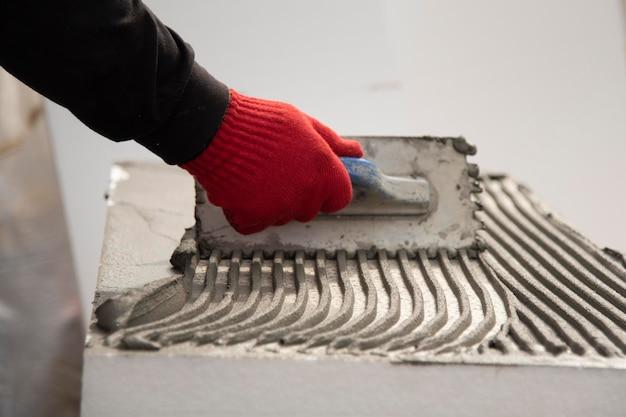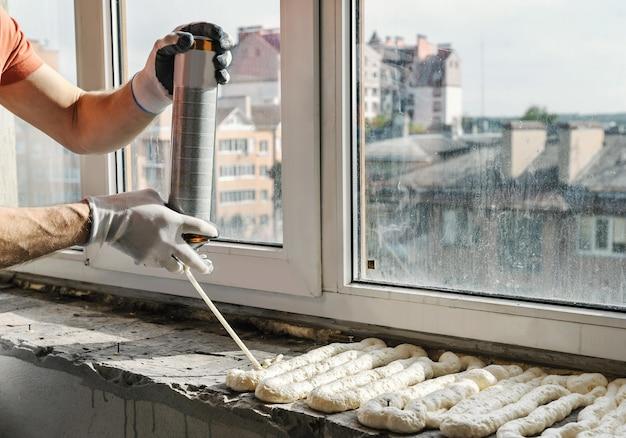Polyurethane is a popular choice for protecting wooden surfaces and adding a beautiful finish. However, applying polyurethane can be a bit tricky, especially when it comes to avoiding common issues like bubbles, brush strokes, and splotchy finishes. One question that often arises is whether a foam brush is a suitable tool for applying polyurethane.
In this blog post, we will delve into the world of polyurethane application and explore whether a foam brush is the right choice for this task. We will also address various concerns related to achieving a smooth finish, preventing brush strokes, avoiding bubbles, and more. So if you’ve ever wondered about the best techniques and tools for applying polyurethane, keep reading to discover the answers.

Should I use a Foam Brush for Polyurethane?
Polyurethane is a versatile and durable finish that can transform your wooden furniture or floors into stunning pieces. When it comes to applying polyurethane, one question that often pops up is whether to use a foam brush or not. Let’s dive into the pros and cons of using a foam brush for polyurethane and help you decide which tool is right for you.
The Foam Brush: Friend or Foe
Foam brushes are inexpensive, easy to find, and don’t leave bristle marks on your finished surface. Sounds like a match made in heaven, right? Well, hold on to your work boots and let’s take a closer look.
The Pros of Foam Brush
A foam brush can be a handy tool for applying polyurethane, especially when dealing with intricate details or contoured surfaces. Its soft foam leaves a smooth, even finish with little to no brushstrokes. Plus, it’s a breeze to clean up – just toss it away when you’re done, and boom, your hands are free of sticky substances.
The Cons of Foam Brush
While a foam brush may seem like a dream come true, there are a few potential downsides to consider. Firstly, foam brushes tend to absorb and hold more polyurethane than other brushes, making it harder to achieve thin and even coats. This can result in a thick and gloppy mess if you’re not careful. Secondly, foam brushes can be a bit tricky to control, especially for beginners. They may not provide the same level of precision as a high-quality bristle brush, which could make it harder to achieve perfect results.
Alternatives to Foam Brushes
Now that you’re aware of the foam brush’s pros and cons, it’s time to explore some alternative options.
The Bristle Brush Brigade
Bristle brushes, with their natural or synthetic bristles, offer greater control and precision when applying polyurethane. They come in various sizes and are suitable for both small and large surfaces. If you’re aiming for a flawless finish that would make Michelangelo shed a tear of joy, a high-quality bristle brush might be your best bet.
The Mighty Mystery of the Sprayer
If you have a large area to cover or want to tackle multiple projects, using a sprayer can save you time and effort. A sprayer provides an even application and allows you to reach every nook and cranny effortlessly. However, be prepared for a learning curve, as sprayers can be a bit tricky to master. It’s like training a unicorn to tap dance – challenging, but oh so worth it!
The Final Verdict
In the epic battle of foam brush versus other applicators, there is no one-size-fits-all answer. It ultimately depends on your preference, comfort level, and the specific project at hand. If you’re a foam brush aficionado and have successfully used it before, go ahead and rock that foam like nobody’s business. But if you’re feeling adventurous or yearning for a more tailored finish, it may be worth exploring the realm of bristle brushes or sprayers.
Remember, my wood-working compadre, the key to achieving polyurethane perfection lies in practice, patience, and a healthy dose of experimentation. So grab your brush, don your DIY cape, and let your inner craftsman soar!
Stay tuned for more riveting discussions on the eternally thrilling topic of polyurethane – coming to a blog near you in 2023!

FAQ: Should I use a foam brush for polyurethane?
In your quest for the perfect finish on your wood projects, you may have come across the debate on whether to use a foam brush for applying polyurethane. We’ve gathered some of the most frequently asked questions to help you make an informed decision. So, let’s get right to it!
Why am I getting bubbles in my polyurethane
Bubbles can be frustrating, but fear not, they can be avoided! The most common cause of bubbles in polyurethane is applying the finish too vigorously. Take it easy, my friend. Slow and steady wins the race.
Can I use a foam brush to apply varnish
Absolutely! Foam brushes are a popular choice for applying varnish and polyurethane. Their smooth, even application makes them ideal for achieving a flawless finish, especially on smaller projects.
How do I get a smooth finish with water-based polyurethane
Water-based polyurethane can be a bit trickier to work with, but fear not, we’ve got you covered. To achieve that smooth finish, lightly sand between coats and apply thin layers, allowing sufficient drying time. Patience is a virtue, especially when it comes to polyurethane.
Should I sand in between coats of polyurethane
Yes, my friend, sanding between coats is a crucial step. It helps create a smooth surface, allowing subsequent coats to adhere better. A gentle sanding with fine-grit sandpaper, such as 220 grit, will do the trick. Just remember to wipe away any dust before applying the next coat.
Can you apply Minwax Polycrylic with a foam brush
You betcha! Minwax Polycrylic and foam brushes are a match made in woodworking heaven. The smooth application of the foam brush ensures an even distribution of Polycrylic, giving you a fantastic finish.
Why does my polyurethane look splotchy
Ah, the dreaded splotchiness. This is often caused by uneven application or inadequate surface preparation. To avoid these unsightly patches, always apply polyurethane in thin, even coats and make sure your surface is clean and smooth. No more splotches, no more worries!
Should you roll or brush polyurethane
When it comes to applying polyurethane, brushing is generally the preferred method. Brushes allow for better control and precision, ensuring an even and flawless finish. Rollers can be handy for larger surfaces, but they may leave behind noticeable texture.
What kind of brush is best for polyurethane
The best brush for polyurethane is one made of high-quality synthetic bristles, specifically designed for smooth finishes. Look for brushes labeled as “varnish brushes” or “poly brushes.” These brushes will become your trusty sidekick in the battle against brush strokes.
How do you prevent brush strokes
Nobody likes brush strokes, and we’re here to help you banish them. First, make sure you choose the right brush. Next, load your brush with just enough polyurethane, avoid overloading it. Finally, use long, smooth strokes in the direction of the wood grain. Show those brush strokes who’s the boss!
How do you apply polyurethane without bubbles
Bubbles, begone! To achieve a bubble-free finish, start with a clean surface, apply thin coats, and use smooth and deliberate strokes. Avoid vigorous back-and-forth motion, as it can introduce air bubbles. Take your time, and those bubbles won’t stand a chance.
How do you clean a foam brush after polyurethane
Cleaning a foam brush is a breeze. Simply rinse it with warm water until the water runs clear. If you want to go the extra mile, you can use a bit of mild dish soap. Just make sure to thoroughly rinse away any soap residue. Your foam brush will be fresh and ready for its next adventure.
Is 3 coats of polyurethane enough
Ah, the magic number three. While three coats can provide adequate protection, it all depends on the look you desire and the level of durability you need. Feel free to add additional coats if you want a deeper, more lustrous finish. There’s no right or wrong answer here, my friend.
How do you apply polyurethane without brush marks
Brush marks can cramp your style, but fear not, we shall overcome! First, make sure your brush is clean and in good condition. Then, apply thin coats using long, even strokes. Sanding between coats will also help reduce brush marks. With a little practice, those brush marks will be a thing of the past.
Do foam brushes leave streaks
Good news! Foam brushes are excellent at leaving minimal or no streaks at all. Their smooth texture allows for even distribution of the polyurethane, resulting in a flawless finish. So, grab your foam brush and paint away, my streak-free friend!
Can I use a sponge to apply polyurethane
While sponges can work for applying polyurethane, they tend to soak up more of the finish, leading to wastage. Additionally, sponges may leave behind a textured finish. We recommend using a foam brush or a high-quality brush for better control and a smoother application.
Can I use a rag to apply polyurethane
Using a rag for polyurethane application can be difficult to control and may result in an uneven finish. Rags tend to absorb more of the finish, leading to excess waste. To achieve a flawless finish, we recommend using brushes or foam brushes for better precision and control.
What grit sandpaper should I use for polyurethane
For sanding between coats of polyurethane, a fine-grit sandpaper such as 220 grit is ideal. It’s gentle enough to smooth the surface without damaging the previous coat. So grab your sandpaper, give it a gentle rub, and watch your finish shine.
How do you get an even coat of polyurethane
Eager for that perfectly even coat? Apply polyurethane in thin layers, moving in the direction of the wood grain. Avoid excessive brushing, which can disturb the previous coat. Take your time and make sure your strokes are smooth and deliberate. An even coat is within your grasp.
What do you use a foam paint brush for
Oh, the wonders of a foam paint brush! Foam brushes are versatile little fellows, perfect for applying paint, stain, varnish, and even polyurethane. Their smooth application and minimal brush strokes make them a favorite among DIY enthusiasts and professionals alike. Don’t underestimate the power of the foam brush!
With these FAQs, you’re now armed with the knowledge to make an informed decision on using a foam brush for your polyurethane adventures. So go forth, my friend, and create beautiful, flawless finishes that will leave others marveling at your woodworking prowess!